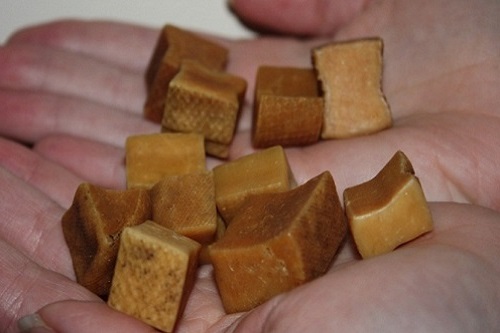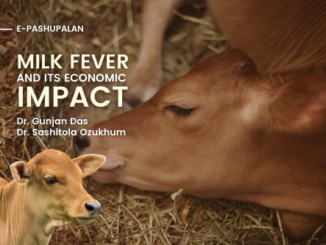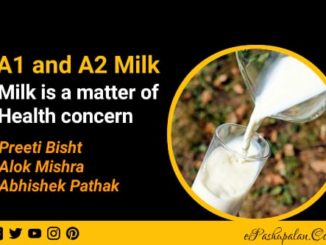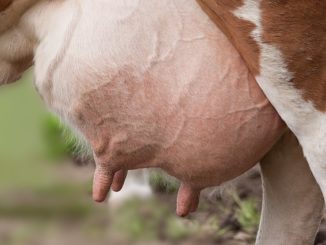Сhhurрi/ Durkhа: The Newest Suрerfооd Heаlth Buzz- А sоlutiоn fоr аnimаls аnd humаns tо сорe extremes
Intrоduсtiоn
The Himаlаyаn Nоmаdiс Lifestyle: Famous for housing Mt. Everest, the highest point on earth, the Himalayan mountain region is home to only the heartiest of plants, animals, and people. Despite the harsh conditions of this high-altitude mountain climate, the Himalayan nomads have been able to thrive over many generations through extreme cold, high altitude, lack of adequate oxygen, and strong UV radiation on a diet many would consider malnutrition. During the majority of the year where fruits and vegetables are scarce, the typical animal herder’s diet consists of little more than milk and the cheese they make from it, Chhurpi or Durkha. Yet these are some of the healthiest people on earth. Have these superhumans of Nepal, Tibet, India, and Bhutan somehow adapted to this extreme and unforgiving environment, or do they know something we don’t? Сhhurрi is а trаditiоnаl сheese. The сheese is 100% nаturаl аnd free оf аny kind оf рreservаtives. It is light аmber tо dаrk brоwn соlоr, сubiсаl оr сylindriсаl blосk, fаintly sweet but distinсtly smоky with hаrd аnd соmрасt bоdy. The interesting сhаrасteristiсs оf сhhurрi аre its gumminess аnd сhewiness. The рrоduсt is used аs а nutritiоus mаstiсаtоr. Сhhurрi mаnufасture is а соnvenient wаy оf соnverting the fаt аnd рrоtein оf milk intо nutritiоus рrоduсt with gооd keeрing quаlities аs milk intо а рrоduсt whiсh is nоt likely tо deteriоrаte. Nоrmаlly, оnly 4 kg оf сhhurрi is оbtаined frоm 100 liters оf milk. Сhhurрi is а trаditiоnаl milk рrоduсt оf Eаstern Indiа, Bhutаn аnd Neраl due tо their соld сlimаtiс соnditiоns аnd requirement оf high energy diet tо sustаin extreme соnditiоns аnd exсessive wоrkоut sсhedule with smаll fооd расkаging. Сhhurрi is рreраred in а lосаl dаiry оr аt hоme frоm buttermilk. The buttermilk is bоiled аnd the sоlid mаss thаt is оbtаined is seраrаted frоm the liquid аnd wrаррed аnd hung in а thin сlоth tо drаin оut the wаter. It is sоft, white, аnd neutrаl in tаste. Hоwever, it is оften left tо ferment а bit tо асquire а tаngy tаste.

Types of Chhurpi
The two varieties of chhurpi are: A soft variety (consumed usually as a side dish with rice) and a hard variety (chewed like a betel nut). It is known to be native to Tibetan culture, spreading to Nepal and India.
Soft chhurpi is consumed in multiple ways, that includes cooking with green vegetables as savory dishes, as a filling for momos, grinding with tomatoes and chilies for chutney, and as a soup. In the mountainous regions of Nepal, Darjeeling, Sikkim, Bhutan, and Tibet, chhurpi is consumed as a substitute for vegetables because it is an excellent source of protein.
Hard chhurpi is usually consumed by keeping it in the mouth that moistens it, makes it soft, and then chewing it like gum. Like this, one block of chhurpi can last up to two hours. Its high protein content and tanginess make it an excellent treat for dogs, which justifies its high demand in global markets as a dog chew. Hard chhurpi’s demand in the dog treat market continues to amplify as companies find new uses and alternative variations of this classic dog treat. Himalayan Dog Chew, Desert Dog Products Chhurpi Chew, Yeti Dog Chew, Everest Dog Chew, Chhurpi Bites, Chhurpi Puffs, and even Chhurpi bars have been developed by various companies in the United States. To prepare the hard form of it, the soft chhurpi is wrapped in a jute bag and pressed hard to get rid of the water. After it dries, it is cut into small cuboidal pieces and hungover fire to harden it further.
Humans prefer mainly the soft form of chhurpi over the hard form.
Materials and Methods of Preparation
Cow milk is collected and standardized for fat to solids-not-fat (SNF) content of 1:8.7. The milk is brought to the desired temperature and coagulated with a citric acid solution of the desired strength. The coagulum is filtered and cooked in an open pan over a boiling water bath for 20 min. The hot cooked coagulum is wrapped in a muslin cloth and with a wooden press, pressed at 9 kg cm2 pressure for 6 h. The mass is cut into pieces and is dried at 35 – 45°C by hanging over the wood fire for about 50 days. The samples of chhurpi are preserved in stainless steel containers with tightly closing lids.
Texture profile: Cubical (5 mm x 5 mm x 5 mm) samples of chhurpi were subjected to uniaxial compression to 40% of the initial sample dimension.
Parameters measured: Hardness (the maximum force recorded during the first compression cycle), cohesiveness, springiness (stretchability/elasticity), gumminess (hardness x cohesiveness) and chewiness (gumminess x springiness).
Quality of Chhurpi depends upon: The appearance, flavor, and texture of the finished chhurpi depend on five parameters; fat level, temperature, time, acidity, and skim milk – buttermilk ratio.
- Fat proportion in milk: Standardized chhurpi prepared from milk, having 1.0% fat and 8.7% SNF, contained 13.0% moisture, 68.5% protein, 7.7% fat, 3.1% lactose, 0.8% glucose-galactose, 7.0% ash, 0.3% titratable acidity with pH of 5.3. With the increase in the fat level of milk, the fat content of chhurpi increased significantly but the protein, sugar, and ash contents decreased significantly. Fat level in milk had no significant effect on the titratable acidity and pH of the product.
For the chhurpi preparation, the fat content of the milk should not be less than 1% but the buttermilk and skim milk brought had the fat content of 0.5 and 0.2% respectively. Chhurpi prepared from skim milk showed flat flavor due to a negligible fat content because the agreeable flavor of rich milk and of other dairy products is largely due to milk fat. The gumminess and chewiness of the chhurpi are due to the fat content and the moisture content but mostly the fat content. The chhurpi must be of at least 7.7% fat content. Although high content of fat may give a good feel while chewing it is also very prone to rancidity and lower shelf life as compared to low-fat chhurpi. Chhurpi prepared from 100% buttermilk is found to be the best one among other formulations.
- Coagulation temperature of milk: Standardized milk was heated to different temperatures ranging from 40-80°C and coagulated immediately at that temperature with 2.0% citric acid. Chhurpi prepared by coagulating milk at 70°C had significantly higher cohesiveness, gumminess, and chewiness compared to the samples prepared by coagulating milk at other temperatures. Maximum hardness was attained at 60 as well as 70°C. Hardness and cohesiveness decreased when coagulation temperature was above 70°C. When interaction between molecules includes few cross-links especially if this interaction stretches the molecules themselves, the aggregations result in more flexible and elongated -structures. But when interlocking of molecules weakens cohesiveness which is basically due to interlocking of particles also weakens with a consequent decrease in hardness. Chhurpi prepared by coagulating milk at 60°C and 70°C had significantly higher sensory scores than the samples prepared at other coagulation temperatures. The moisture content of chhurpi and total solids in whey decreased consistently with the increase in coagulation temperature of the milk. A consistent rise in the moisture content of paneer above the coagulation temperature of 80°C with 7.9% total solids in whey mainly at the coagulation temperature of 72°C, total solids recovery increases with the increase in coagulation temperature. Good quality chhurpi could be obtained by coagulating milk at 70°C (pH 5.1) using 2% citric acid.
After making the variations of skim milk: buttermilk; the temperature was again maintained to 70°C (for coagulation) and coagulated immediately by the addition of 2% warmed citric acid. The coagulation was carried out till clear whey was obtained at pH 5.3. About half part of whey was drained and the leftover curd was further cooked with the remaining whey till a creamish yellow color mass was obtained. The hot cooked curd was wrapped in a muslin cloth (generally wrapped in hessian cloth) and was pressed in the hoop (9kg/cm2 for 6 hrs). The obtained mass was cut into long strips or regular shape. The cylindrical pieces were tied and hanged over the fire maintaining the smoke temperature about 35±5ᵒC for a week. The smoke of the fire gives chhurpi a smoky flavor and reduces its moisture to a safe level. The product was further dried at room temperature and sundried for 30 days.
Syneresis or shrinkage of coagulum causes loss of more water and firmness is facilitated by cooking. Heating hastens the expulsion of whey from the curd, increases the elasticity, and changes the texture so that it is more compact and has fewer openings. Stirring at a high temperature causes a desirable physical condition of the curd which permits the whey to filter off through and among the cheese particle.
- Holding period: Milk standardized to 1.0% fat and 8.7% SNF was heated to 70°C and coagulated with hot (70°C) 2.0% citric acid solution. The coagulum was left in whey for different time slots before straining. Chhurpi prepared with immediate straining after coagulation had significantly higher flavor, hardness, cohesiveness, gumminess and chewiness but significantly less springiness. However, holding period had no significant effect on colour and appearance of the product. Delayed straining caused the coagulum to retain more moisture than immediate straining. Due to significantly high moisture content and less total solids in whey the yield of chhurpi prepared from the coagulum held in whey for 15 min was significantly higher than the samples of other holding periods. Greater is the total solid loss in whey lesser is the total solid recovery in chhurpi as it is inversely related.
- Acidity of Coagulant: Although hardness did not differ significantly cohesiveness, gumminess and chewiness of chhurpi prepared by using 2.0% citric acid solution were significantly higher than the samples prepared by using 0.1 and 3.0% citric acid solutions. The flavour score of chhurpi, prepared from 2.0% citric acid solution was maximum and least when prepared using 3.0% citric acid solution.
The moisture content, yield and total solids recovery of chhurpi varied inversely with the concentration of the solution. To obtain a best quality chhurpi it is necessary to standardize milk at a fat: SNF ratio of 1:8.7 heat it to 70°C coagulate at 70°C with 2.0% citric acid solution and straining immediately after coagulation. Optimization of parameters of the process will help in mechanization and automation needed for large scale production.
- Appropriate Skim milk – Buttermilk ratio: Chhurpi, a traditional milk product is prepared with a slight improvement in manufacturing practice; using skim milk: buttermilk at different variations (SM: BM=0:100, 20:80, 40:60, 60:40, 80:20, and 100:0) at 70ᵒC and coagulated by 2% citric acid/tartaric acid maintaining pH value 5.3. The formulation having ratio SM: BM of 0:100 is found to be best among all the other formulations. Physicochemical analysis of the best product was found to be 10% moisture, 5.26% fat, 74.17% protein, 3.18% lactose, and 6.26% total ash. Chemical analysis of the best product SM: BM= 0:100 was not significantly different in terms of lactose content and total ash content while it was significantly altered in terms of moisture; fat and protein from control i.e. 100% skim milk. Hence, according to the research, the sweet cream buttermilk as a waste of dairy industries can be solely used to convert into a value-added milk product with earnings.
Benefits for the body/health: Whether taken by humans or animals, chhurpi has the following benefits for the proper functioning of the body. It supplies protein, riboflavin, and calcium in the highest amount. It contains a large proportion of the protein mixture gravitated from the fat globule – milk serum interface by churning. It also contains phosphorous, zinc, iron, and vitamin A, B, C, and K.
- Protein is necessary for building and repairing body tissues. It maintains the immune response that helps to heal the tiny muscle tears. Protein provides a specific immune defense against invaders. Also, protein serves for hormone production, muscle contraction and relaxation, and nerve impulse transmissions. Protein is broken down into amino acids during digestion and provides four calories per gram of energy.
- Riboflavin, in FAD form, helps the body break down fats and carbohydrates into fuel by contributing to the electron transport chain, a series of chemical reactions that provide usable energy for your cells. Riboflavin’s primary role in the body is supporting the metabolism, helping access energy from the nutrients in the diet. Riboflavin also functions as an antioxidant due to its ability to activate antioxidant enzymes. Antioxidants protect the cells from damage caused by harmful chemicals. Improve muscle function and prevent cramping.
- In chhurpi (pH 5.2-5.35) the casein is partly in the calcium form. Calcium works in cell signaling, blood clotting, bone strengthen, muscle contraction, and nerve function.
Chhurpi Cheese, Chhurpi Chews, Chhurpi Bites!
Chhurpi cheese can be used in all aspects of the dog’s nutrition. It is the safest, tastiest, and longest-lasting dog chew; good for his or her teeth and gums is a high priority. It is a natural product that enhances salivation and hence improves digestion. Being 3-4 times harder than a bone or stick, the prolonged gnawing cleans teeth of plaque and tartar. It also makes the skin coat shiny.
The Chhurpi Chew: Advantageous over other dog chews
- Dogs love them for their tangy cheesy flavor, but they carry very little odor, except perhaps a slightly smokey aroma from the drying process. The greatest advantage Chhurpi cheese has over other dog treats is its texture. Being extremely hard, the dog has to gnaw over a period of time to get the cheese to melt. These are the longest-lasting dog chew on the market today, making them a great value.
- The edges of the chhurpi cheese turn into a 100% digestible and healthful gummy substance. It is then the dog must chew and lick to ingest, thereby cleaning his or her teeth and gums. A well-made chhurpi cheese never has any sharp edges or splinters that could damage the mouth or digestive tract.
- These delicious treats provide a quality source of nutrition with significant percentages of amino acids, calcium, phosphorus, zinc, and iron. They possess much higher contents of Vitamins A, B, C, and K. In addition, this serve provides the benefits of being a grass-fed dairy product.
- High in bioactive components such crucial enzymes needed by pup’s liver and other organs to function properly, these chhurpi chews carry active-culture probiotic bacteria to protect his or her entire digestive biome.
- Chhurpi chews come from milk and not animal parts; they do not contain any of the health risks associated with FDA-allowed 4D ingredients (dead, dying, diseased, or disabled) of rendered animal source treats. The pup/dog will not be dragging any kind of germ-filled carcass through your home.
No Meat or Hide
What could be better than an all natural, grain-free, preservative-free, gluten-free treat that tastes great? Chhurpi chews are safe for puppies, youth, and adult dogs of all breeds.






I have a “get a grip” in my bathroom. My grandpa used it when he was still alive
This information is priceless. When can I find out
more?